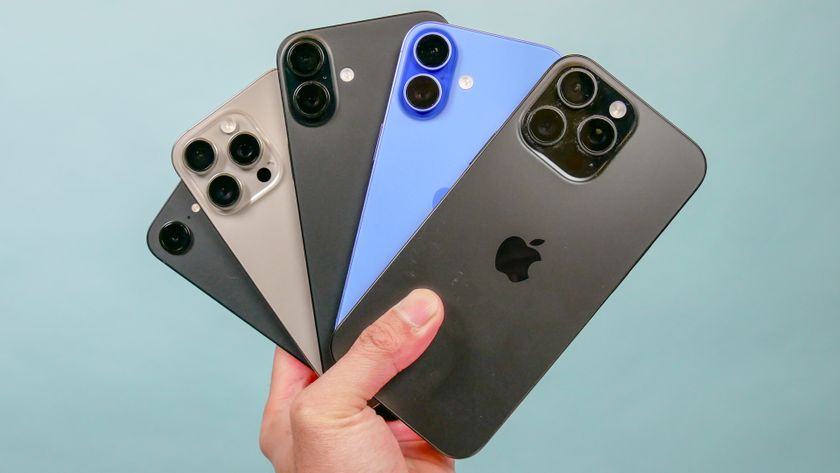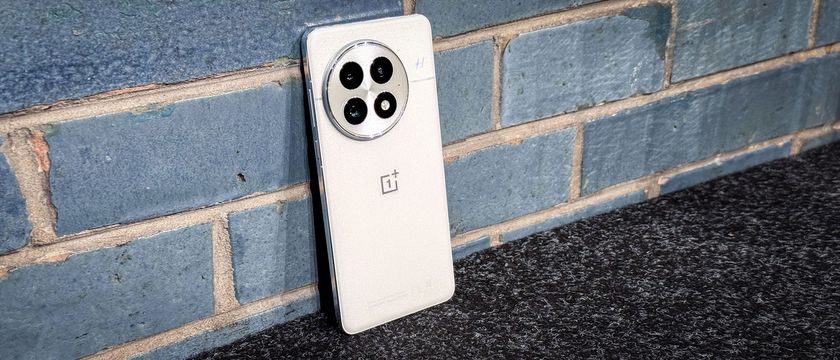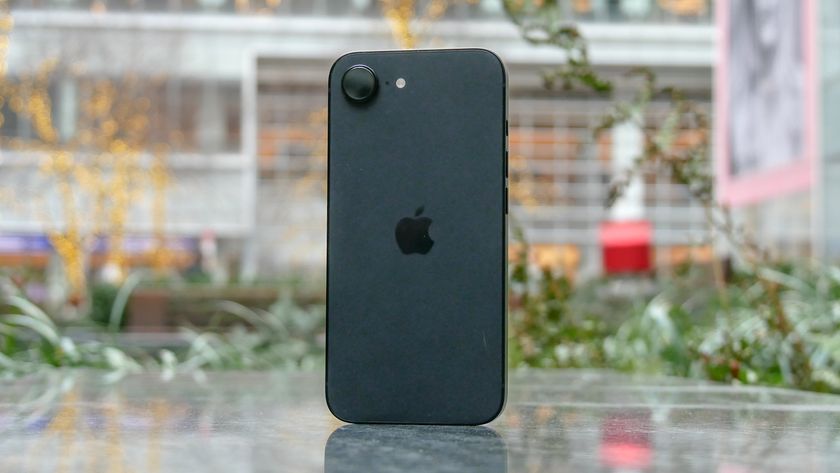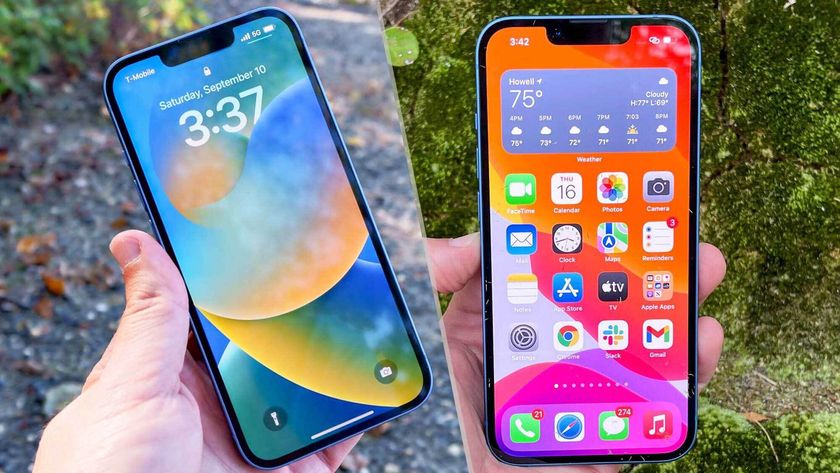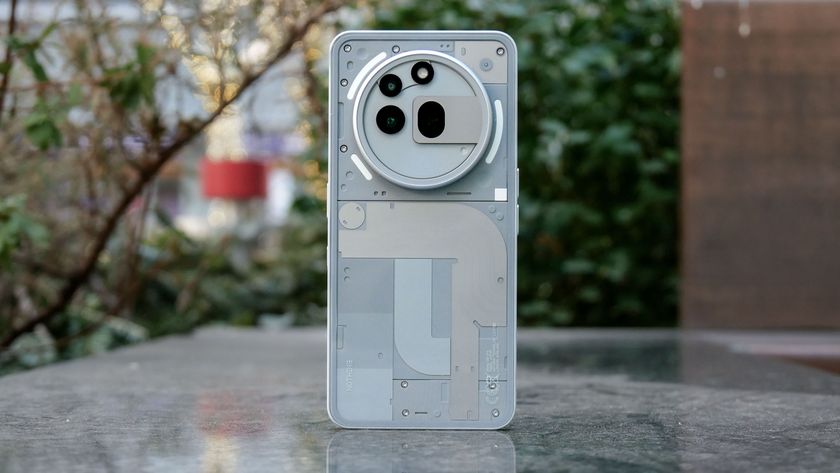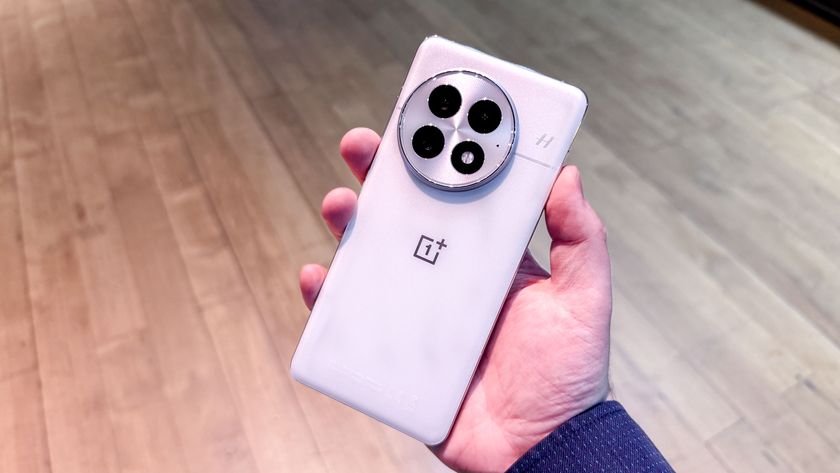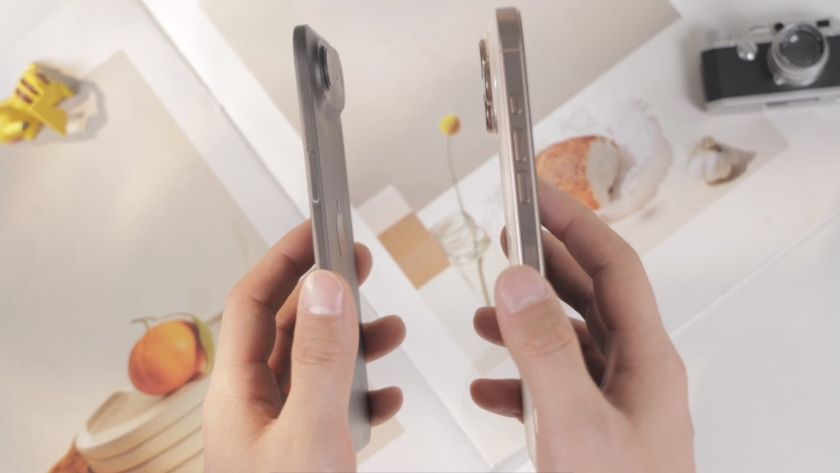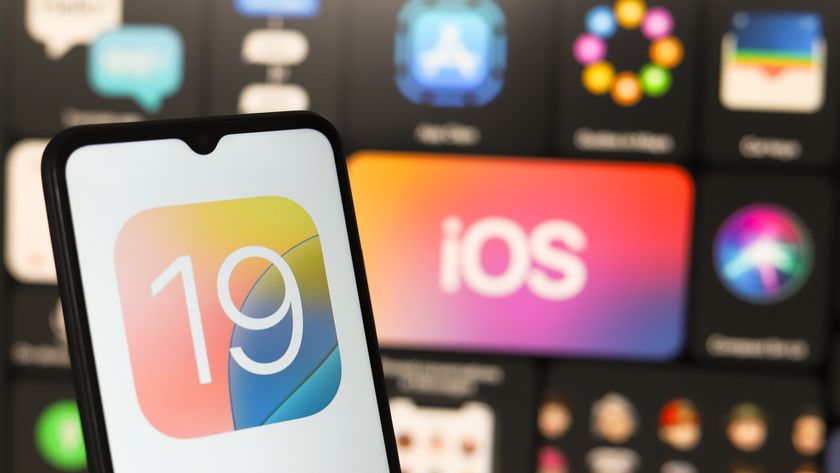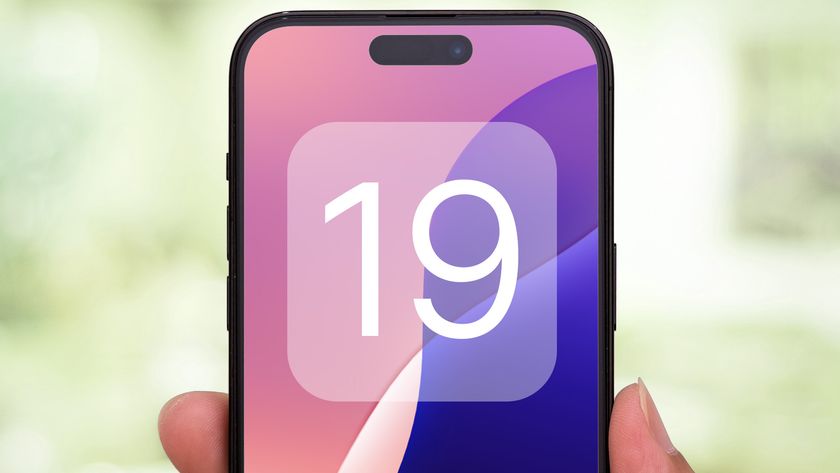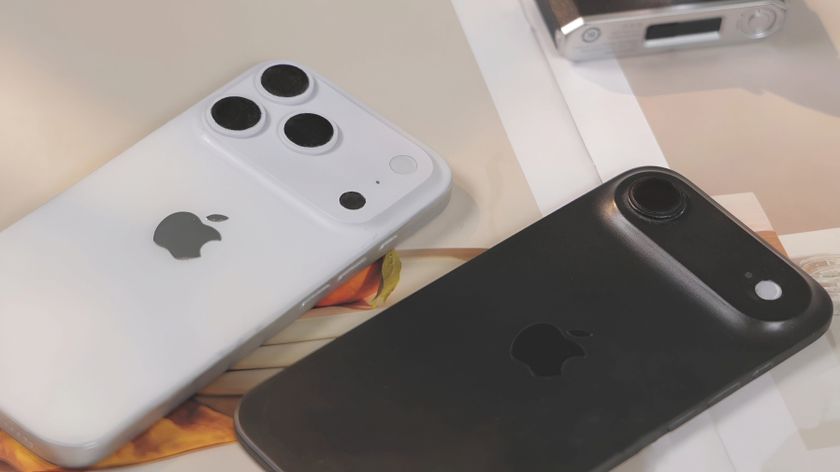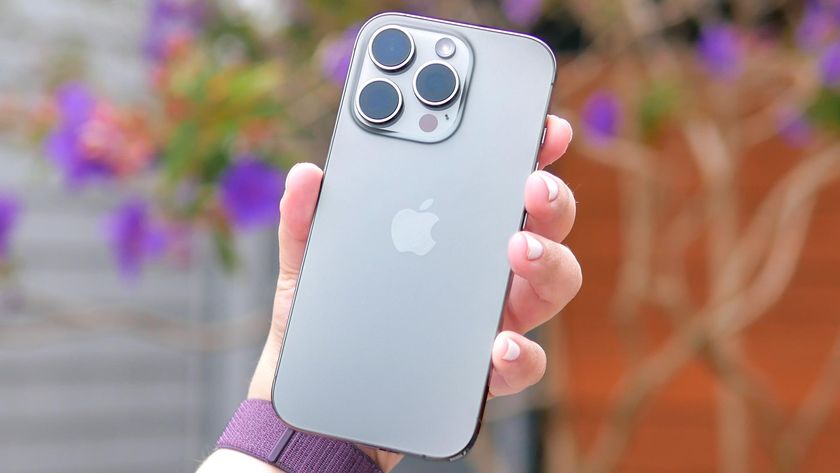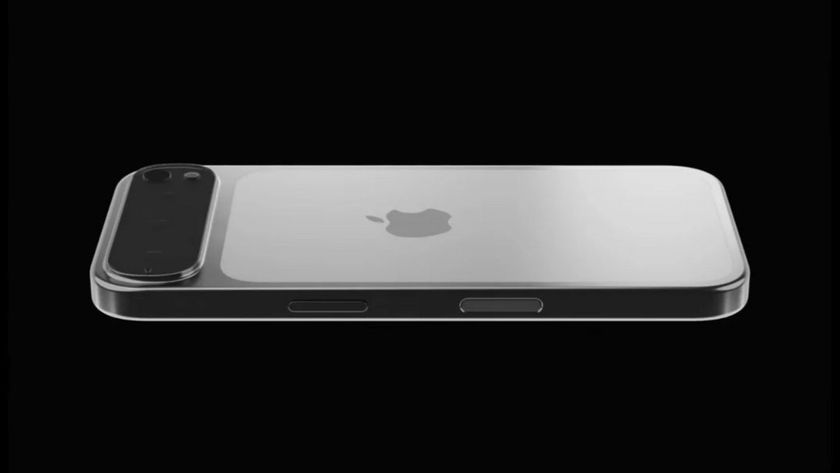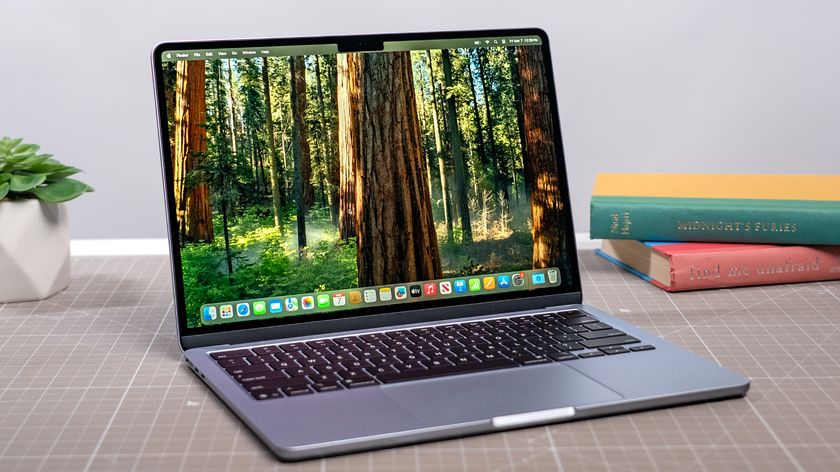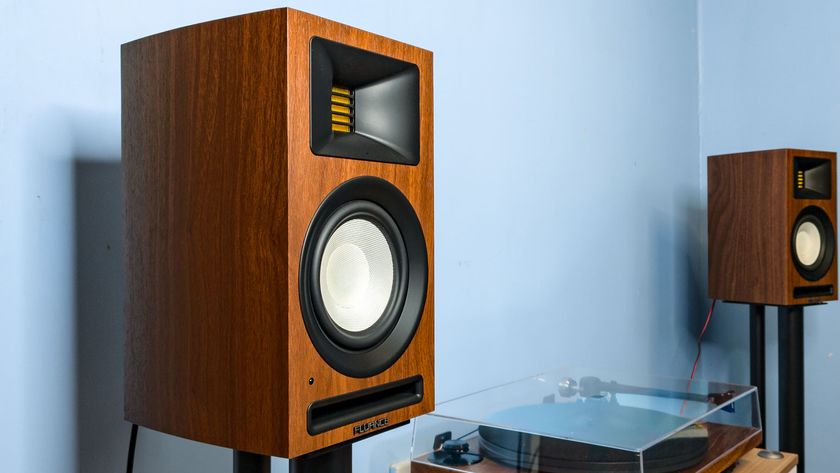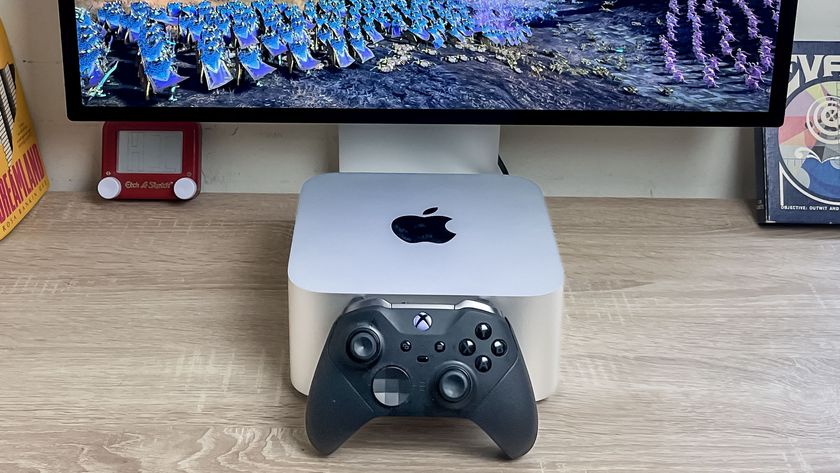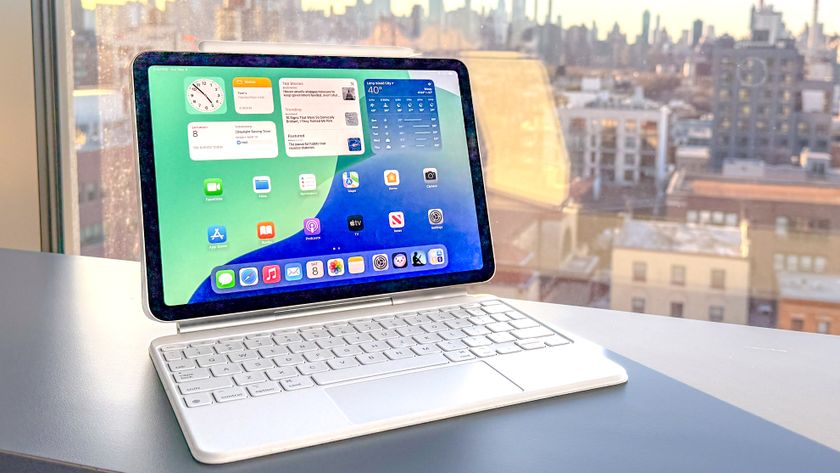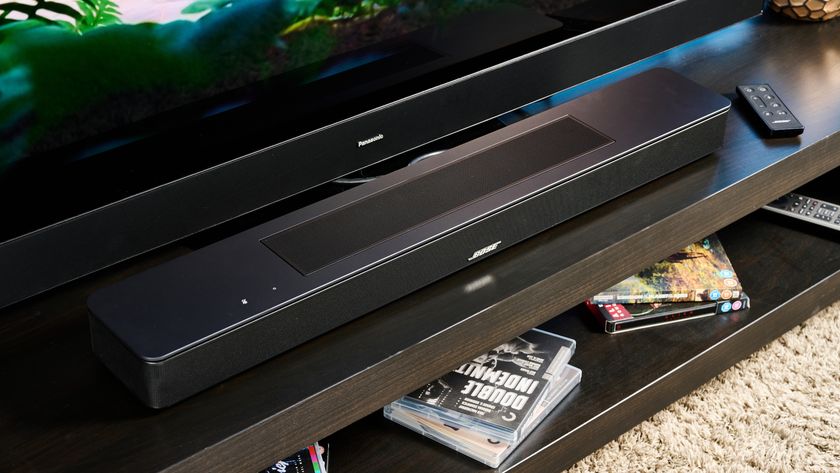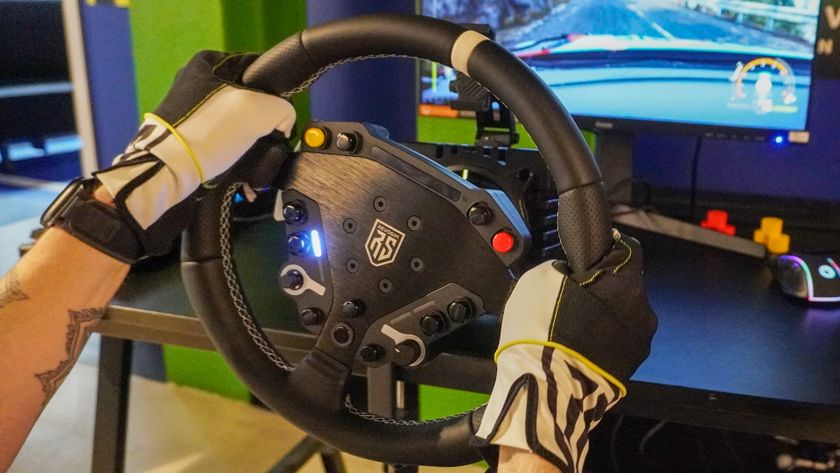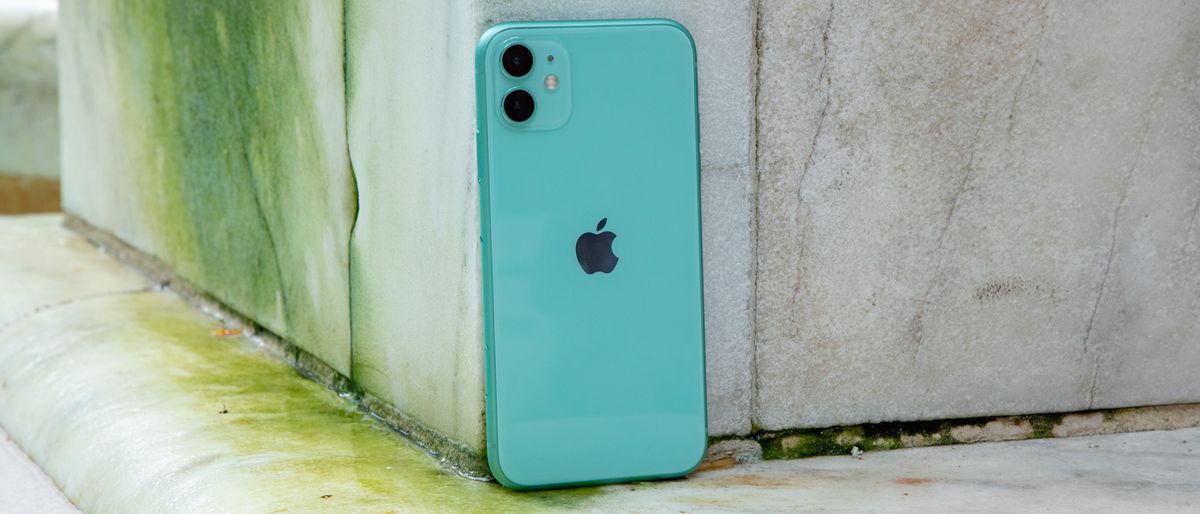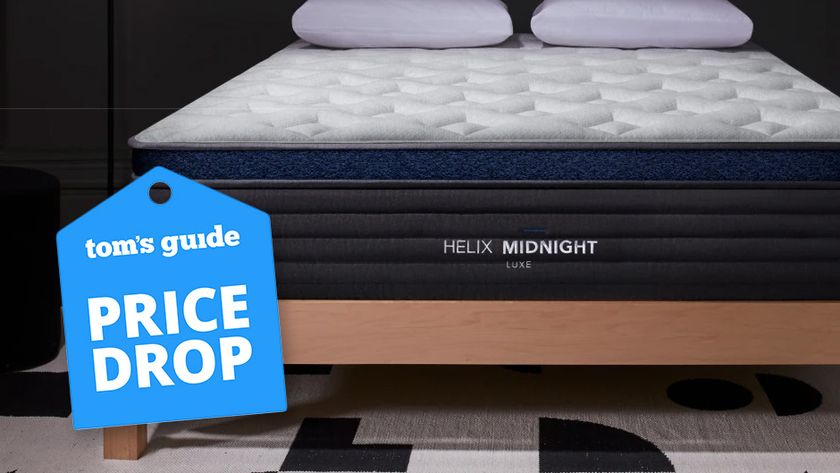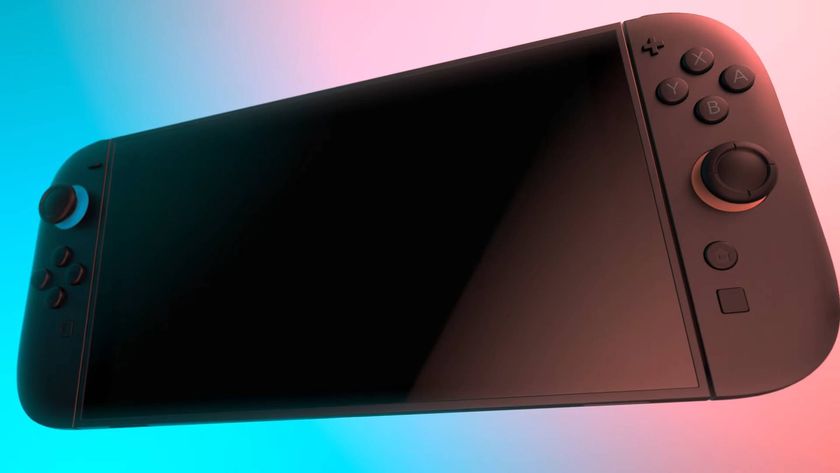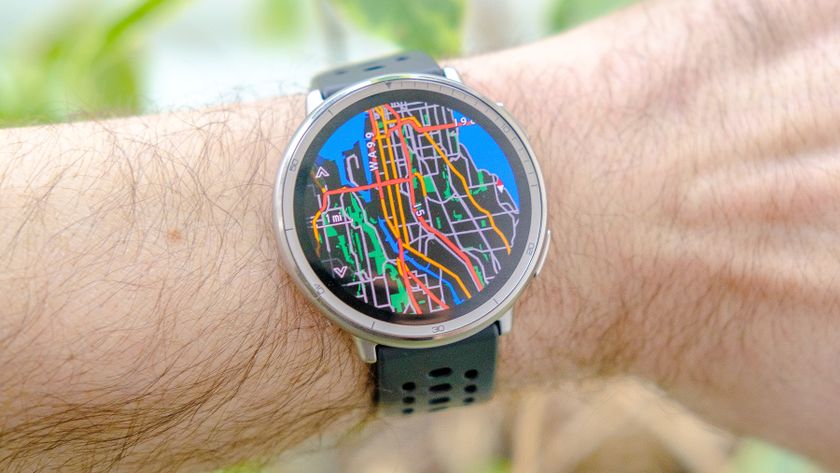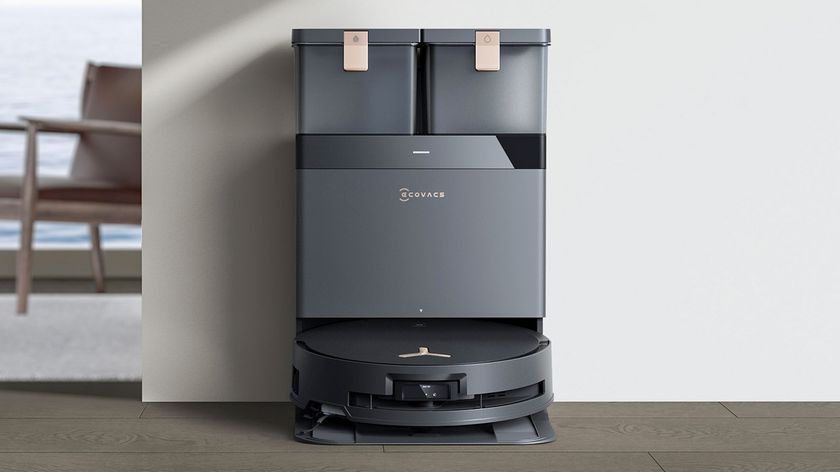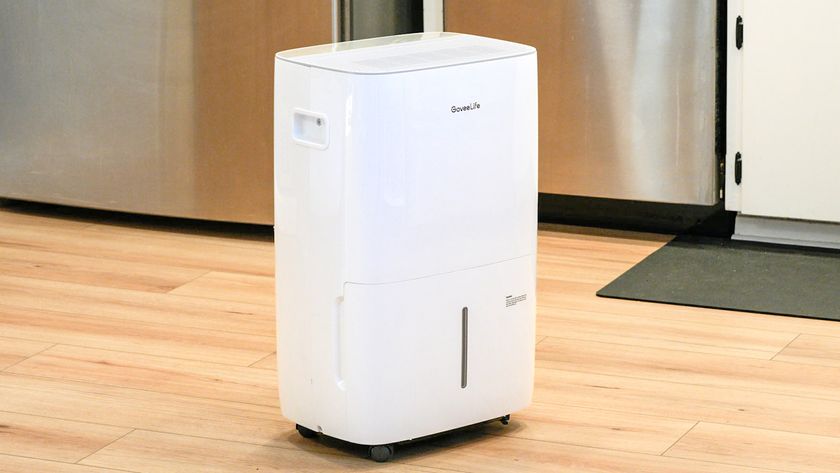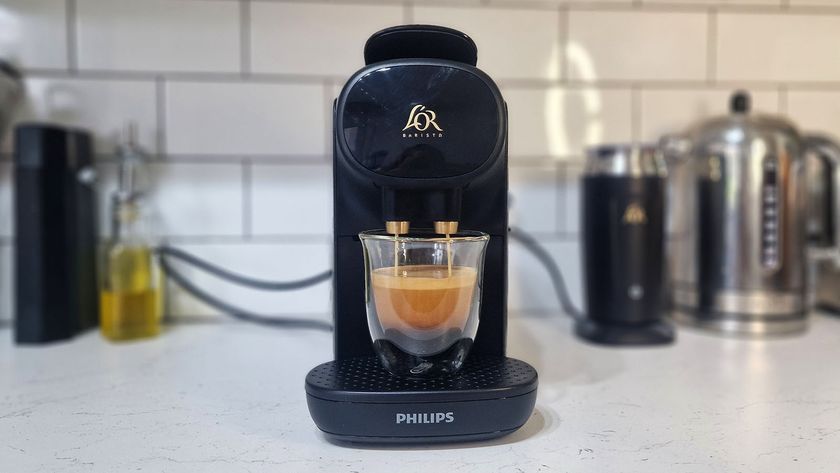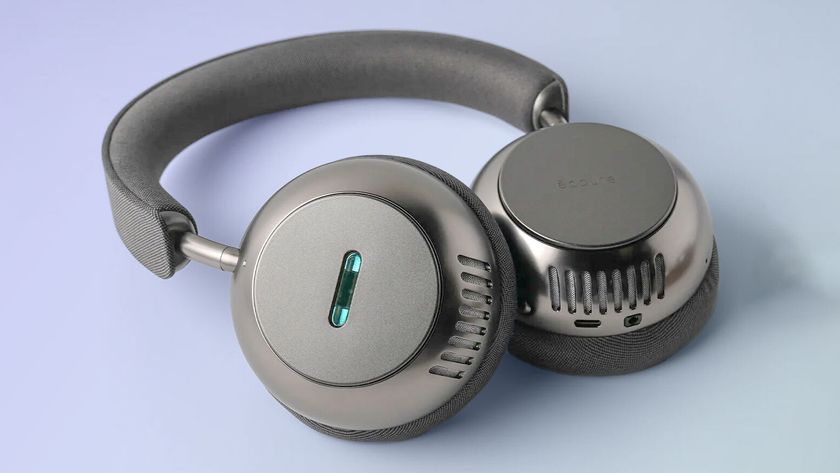Tom's Guide Verdict
The iPhone 11 delivers superb cameras, fast performance and excellent battery life, making it the iPhone to buy for many people, especially after Apple cut the price once again.
Pros
- +
Compelling ultra-wide camera
- +
New Night mode is excellent
- +
Long battery lifE
- +
Fast A13 Bionic processor
Cons
- -
Fast charger not included
- -
Just 64GB of storage
- -
LTE slightly slower than iPhone 11 Pro
Why you can trust Tom's Guide
Thanks to its reduced price, the iPhone 11 remains one of the best phones for the money. Now at $499 following the iPhone 13 launch, the new iPhone costs $200 less than the iPhone 13 mini and $300 less than the iPhone 13. Yet, if you don't mind the two-year-old hardware, the iPhone still provides pretty much everything you need in a smartphone. The cameras are very good, thanks to an ultra-wide lens and a Night mode for better low-light performance.
As you'll see in our full iPhone 11 review, Apple upped the ante with greater video-recording quality while also delivering superb battery life. At $799, the iPhone 12 is a great option with its 5G support and an even faster A14. But if you’re on a budget, the iPhone 11 is the best phone for you, and it's one of the best unlocked iPhones if you don't want to commit to a carrier.
Editor's note: If you're having trouble deciding which phone to buy, check out our comparison of the iPhone 13 vs. the iPhone 11, as well as our iPhone 13 review.
iPhone 11 review cheat sheet
- The dual cameras on the iPhone 11 are a huge upgrade over previous iPhones with a great Night mode.
- An ultra-wide camera gives you more shooting flexibility and the app gives you a preview if you want to pop into that mode.
- Apple's A13 Bionic processor makes the iPhone 11 the fastest phone you can buy.
- The 6.1-inch LCD screen is bright and colorful, though the OLED displays on the iPhone 11 Pro models are brighter.
- You can pick from six fun color options, including green, purple and yellow.
- We saw over 11 hours of battery life on our web surfing test, which is well above average for smartphones.
- Fast charging costs extra for the iPhone 11, which is a bummer.
iPhone 11 review: Price and release date
The iPhone 11 went on sale Sept. 20, 2019 at a starting price of $699 for 64GB of storage, or $29.12 per month. That was $50 less than the iPhone XR's debut price. Apple has since cut the price the iPhone 11 and dropped the iPhone XR from its lineup now that we're living in an iPhone 13 world. You can get an iPhone 11 for $499 these days, and if you trade in an iPhone at Apple, you can lower the cost even further.
The new iPhones boost starting storage to 128GB, but the iPhone 11 is a relic of the days when Apple thought 64GB of storage was good enough. You can upgrade to the 128GB iPhone 11 model for $50 extra.
For the UK, you can buy the iPhone 11 from Apple’s website, where it debuted at £729, £779, £879 for the 64GB, 128GB and 256GB storage versions respectively. In comparison, this was about £20 less than the entry level iPhone XR’s launch price, which is unarguably a discount, but a paltry one. These days, UK shoppers pay £489 for the iPhone 11.
Check out our iPhone 11 deals page for the latest sales and discounts.
iPhone 11 review: Specs
| Row 0 - Cell 0 | iPhone 11 |
| Starting Price | $699 |
| CPU | A13 Bionic |
| RAM | Unknown |
| Storage | 64GB, 256GB, 512GB |
| MicroSD? | No |
| Rear Cameras | 12-MP wide (f/1.8) and 12-MP ultra wide (f/2.4) |
| Front Cameras | 12-MP (f/2.2) |
| Water Resistance | Up to 2 meters for 30 minutes |
| Battery Size | Unknown |
| Battery Life (Hrs:Mins) | 11:16 |
| Size | 5.94 x 2.98 x 0.33 inches |
| Weight | 6.84 ounces |
| Colors | Black, Green, Yellow, Purple, White, Product Red |
iPhone 11 review: Design
The iPhone 11's design is a mix of familiar and fresh. The front and sides are pretty much samesies with the iPhone XR, complete with the notch at the top, aluminum band and somewhat chunky bezels (at least compared to the iPhone 11 Pro and the best Android phones).
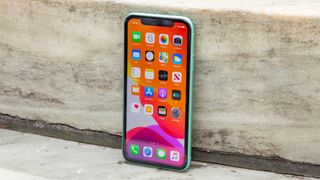
The telltale sign that you have the new iPhone is the oversized dual cameras on the back, housed in a matte glass square. The lenses kind of remind me of robot eyes. The rest of the glass has a glossy finish, so this camera patch provides an interesting bit of contrast. (The iPhone 11 Pro is all matte glass on the back.)
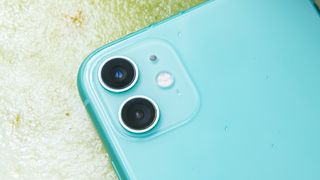
I like the colors for the iPhone 11, which have a more restrained vibe than the Technicolor rainbow that made up the iPhone XR lineup. The more muted hues include a mint green, a pale yellow and a light lavender purple. You can also pick from back, white and Product Red.
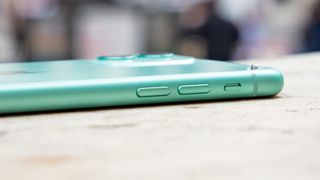
The biggest design change on the iPhone 11 is what you don't see. Apple claims that this phone has the toughest glass — front and back — of any smartphone, thanks to a dual-ion exchange process. Some iPhone 11 owners have complained about easily scratched displays, although we have not noticed any scratches on our review unit. Still, you may want to invest in an iPhone 11 screen protector or iPhone 11 case.
This device also has IP68-rated water resistance, which means that it can withstand 2 meters of water for 30 minutes, and is one of the best waterproof phones out there. The iPhone XR could do only 1 meter. The iPhone 11 Pro ups that to 4 meters, but that's hardly a reason to spend extra dough.
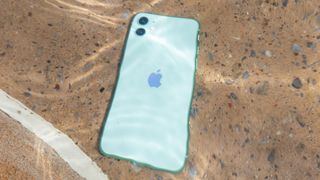
At 5.94 x 2.98 x 0.33 inches and 6.84 ounces, the iPhone 11 is identical to the iPhone XR in size and weight. This puts the phone in between the 5.8-inch iPhone 11 Pro and the 6.5-inch iPhone 11 Pro Max, which I find to be a happy medium in terms of immersive viewing and being able to use the phone with one hand.
iPhone 11 review: Display and audio
The iPhone 11's Liquid Retina HD display is still 6.1 inches like the iPhone XR with the same 1792 x 828 resolution. And our opinion of this panel remains unchanged. It's fantastic for an LCD, with vibrant colors and excellent brightness, but it's not OLED-great.
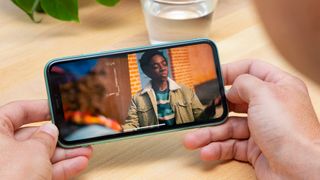
When watching a scene from Stranger Things, both the iPhone 11's LCD and iPhone 11 Pro OLED screen delivered rich colors and fine detail but the viewing angles were narrower on the iPhone 11. The Pro's OLED panel also delivered blacker blacks, which makes for better contrast.
In our lab tests, the new iPhone turned in solid results. The display registered 652 nits of brightness, which is better than the iPhone XR's 589 nits. This panel also registered 113% of the sRGB color gamut. That pales in comparison to some phones with OLED displays; for example, the Galaxy S10 got 208.2%, the OnePlus 7 Pro 180%. It's important to note, though, that Apple purposely tunes its displays to not offer oversaturated hues.
And this is also one accurate screen. The iPhone 11's LCD turned in a Delta-E rating of 0.22 (0 is perfect). The Galaxy S10 was slightly worse with 0.38.
When it comes to sound, the iPhone 11's new spatial audio provides a wider soundstage, complete with Dolby Atmos support. And for a moment I thought I was in a movie theater as I watched the Trailer for John Wick 3. I could clearly hear glass breaking to the left and right of me as it smashed on screen, and every gunshot echoed through my brain (for better or worse).
The new iPhone also provided more robust audio as I listened to Weezer's "Take On Me" side by side with the Galaxy Note 10. Samsung's handset sounded tinnier by comparison.
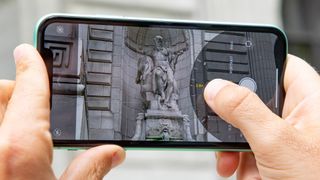
iPhone 11 review: Cameras
Apple's iPhone cameras have recently taken a back seat to the likes of the Google Pixel 3, Huawei P30 Pro and Galaxy S10. The iPhone XR literally couldn't hold a candle to the Pixel 3 in low light in our camera face-off. What a difference the iPhone 11 makes.







Take a look at this image of a flower and vase shot indoors in near darkness. The image from last year's iPhone XS is a dim blob of petals, while you can make out the individual petals and colors in the new iPhone's shot (even though there is noticeable noise).
Thanks to a new wide camera sensor with 100 percent Focus Pixels and smarter software, the iPhone 11 does a much better job snapping pics in little to no light. And the Night Mode kicks in automatically, so you don't have to swipe or tap to activate it as you do with the Android competition. With the iPhone 11, you just have the hold the phone steady for up to 3 seconds as you shoot.
We didn't need Night mode on the iPhone 11 or Pixel 3 for this shot taken inside a dim bar, but it still proved to be a good challenge for both phones. The iPhone 11 triumphed in this case, as it delivered a brighter overall image, especially in the overhead lights. You can also make out more detail in the woman's hair in the iPhone 11's photo, and the Pixel 3 has more trouble with the light shining behind the bottles in the upper left corner.
The other big improvement comes from the iPhone 11's new 12-MP ultra-wide camera, which joins the standard 12-MP camera. This feature lets you fit in up to four times more scene without having to back up, thanks to a 120-degree field of view. In a clever move, the redesigned camera interface gives you a sneak preview of what you could squeeze into the frame if you engaged the ultra-wide lens.
In this photo taken in Bryant Park on an overcast day with the iPhone 11 and Galaxy Note 10, the Note 10 delivers a brighter shot overall. The grass is definitely a more vibrant green. There are other aspects that make the iPhone 11's ulta-wide shot look better, including sharper details and less distortion toward the edges of the frame, but in this case I prefer the Note's pic.
Apple also takes Smart HDR to the next level in the iPhone 11, as the machine learning can understand what the subject is and keep the details you want in the face while retaining the shadows.
In this portrait of my colleague Shaun, his face looks warmer and you can make out the finer lines in his forehead more easily. The Note 10's shot looks washed out. However, the iPhone 11's image accidentally cut off a piece of Shaun's head on the right side.
My only gripe with the iPhone 11 and taking portraits is that it puts you farther away from your subject than the iPhone 11 Pro and 11 Pro do, because the regular iPhone 11 lacks a telephoto lens. So, you'll either have to walk up to your subject or just accept having more of the background in the frame.
The one photo that won me over with the new iPhone's camera versus the Note 10's is this cookie. The iPhone 11's photo captures practically every nook and cranny and the M&Ms really pop, while the Galaxy Note 10's pic looks somewhat washed out and overly bright.
I'm not including many comparisons here versus Google's Pixel 3 because the Pixel 4 is on the way, but I thought this flower shot taken with 2x digital zoom with both phones was interesting. The iPhone 11's shot delivers more realistic colors given the lighting conditions. Still, some may prefer the Pixel 3 photo because of the darker lavender petals and slightly sharper detail.
With iOS 13, the iPhone 11 offered a Deep Fusion feature to perform pixel-by-pixel photo processing to deliver even more detail and better textures along with less noise. Again, you don't need to activate a separate mode; it will just kick in when you're indoors and there's a decent amount of light.
We put Deep Fusion to the test using the iPhone 11 Pro with a beta version of iOS 13.2 and found that there was a subtle improvement. (Deep Fusion works the same on the regular iPhone 11.) Take the above portrait of my colleague, Henry; you can make out more detail in his eyebrows and hair, but his sweater looks pretty much the same across both shots.
iPhone 11 review: Video recording
More and more smartphone makers are upping their video game, and Apple has come out swinging with 4K support for both of its cameras at 60 fps. Apple designed the iPhone 11's cameras to offer extended dynamic range to achieve better highlight details and smoother motion via cinematic stabilization.
What Apple set out to do was give videographers the ability to shoot the same quality video using either lens while maintaining the color and exposure even as you walk through trick lighting situations.
To put the phone's video capabilities to the test, I walked on a gravel path on a park trail, and found that there's really no contest between the new iPhone and Galaxy Note 10. Although Samsung's cameras produced more vibrant greens, the colors were not realistic, and you get more gradation of color and contrast in the iPhone 11's footage. You can also make out more detail in the surrounding grass and leaves in the iPhone 11's video. The Note 10 also had a bit more difficulty with lens flare.
To make shooting video feel more integrated with taking photos, Apple redesigned the iOS 13 camera interface so that you can easily capture QuickTake videos. You just hold the shutter button to start shooting video. You then slide your finger to the right to continue shooting that clip. Don't worry, if you press the shutter and then slide to the left you can still do burst captures of still images.
iPhone 11 review: Front camera
You could say that the iPhone XR's 7-MP front camera was selfie challenged, but the iPhone 11 rectifies that with a sharper 12-MP sensor with a wider field of view. With a tap you can engage the wider angle or you can simply rotate the phone to landscape mode and the wide view will turn on automatically, which is a smart implementation.
But the one front camera feature everyone is talking about with the new iPhone is "slofies," which are slo-mo selfie videos shot at 120 fps. I don't know if the name will take off, but it's a fun feature for those who want to add some drama to selfies.
For kicks, I took a slofie while trying to make a basket in the driveway behind my head. Apple makes it easy in the editing software to slow down just the bits you want. I won't tell you how many takes it took to make the basket, but I like the detail in the shot, especially in the clouds behind me.
For regular selfie videos, you can shoot in 4K up to 60 fps, though if you want the same extended dynamic range offered by the iPhone 11's rear cameras you'll have to stick with 30 fps.
iPhone 11 review: Performance
Apple already had the fastest CPU in a phone at the time of the iPhone 11's release, and that phone's A13 Bionic processor extended the company's lead. (The A14 Bionic in the current iPhone 12 lineup is even faster.) Apple claims that the A13 chip offers 20 percent faster performance across the board over its predecessor, including CPU, graphics and machine learning.
The game Grimvalor played silky smooth on the new iPhone as I hacked, slashed and double jumped my way through this side-scrolling platformer. I didn't notice any hiccups even with multiple enemies on screen. I also enjoyed playing Angry Birds AR; I could get up real close to the pigs before I flung my sling shot and didn't notice any stuttering as I walked around the level.
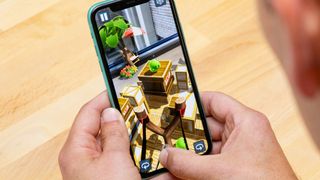
On Geekbench 5, a benchmark that measures overall performance, the iPhone 11 notched a single-core mark of 1,333 and a multicore score of 3,251, compared with 736 and 2,691, respectively, for the Galaxy Note 10 Plus. The OnePlus 7 Pro hit 744 and 2,802 on the same test.
When it comes to graphics performance, the iPhone 11 fell behind top Android phones on the 3DMark benchmark app. On the Slingshot Extreme Metal portion of the test, the iPhone 11 scored 5,785 on the Slingshot Extreme Unlimited Test. By comparison, the Note 10 scored 6,295 on and the OnePlus 7 6,375.
We also ran GFX Bench, which is another graphics benchmark, and this time the iPhone 11 crushed it. On the Aztech Ruins High Tier offscreen test, the iPhone 11 hit 1481 frames (23 fps), compared with 1,058 frames (16 fps) for the Galaxy Note 10. On the Normal Tier version of the same test, the iPhone 11 hit 4,366/67.9 fps versus the Galaxy Note 10’s 1,486/23 fps.
To test real-world performance, we used the Adobe Rush app to edit a 4K video and then transcoded it to 1080p. The iPhone 11 took just 45 seconds, which is surprisingly just about as fast as last year's iPhone XR result. However, this time still smokes the Android competition, as the Note 10 Plus took 1:34.
iPhone 11 review: Battery life
The iPhone 11 offers very good endurance. On the Tom's Guide Battery Test, which involves continuous web surfing over 4G at 150 nits of screen brightness, the iPhone 11's battery lasted an average of 11 hours and 16 minutes. You can see how the iPhone lineup fared overall in our iPhone 11 battery life guide.
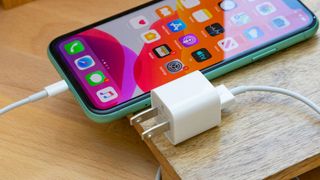
By comparison, the Galaxy S10 hit 10:35 and the Galaxy S10 Plus lasted 12:35. The OnePlus 7 Pro was much further behind with just 9:31. The iPhone 11 Pro Max lasted a bit longer than the iPhone 11 with an average time of 11:54, but the smaller iPhone 11 Pro lasted an average of 10:24.
Unfortunately, while you can fast charge the iPhone 11, you don't get a fast charger in the box like you now do with the iPhone 11 Pro and iPhone 11 Pro Max. Those higher-end phones come with an 18-watt charger. So if you want to juice up to 50% in about 30 minutes, you’ll have to pay $25 for a 18-watt charger plus another $19 for a USB-C to Lightning cable. Boo.
iPhone 11 review: Wireless
Apple is skipping 5G networking altogether for the iPhone 11, which is a bummer because you'll miss out on the blazing speeds offered by phones like the Galaxy S10 5G, which can go as high as a gigabit per second. 5G networks are still being built out, and the modems that support multiple 5G bands are just now hitting the market. Still, if you want a true future-proof iPhone, you may want to wait for the iPhone 12.
The iPhone 11 supports 4G LTE, which offers decent performance but not the same speeds as the iPhone 11 Pro and 11 Pro Max. Why? Because while the new iPhone has 2x 2 MIMO antennas, the iPhone 11 Pro models offer 4x4 MIMO for better performance.
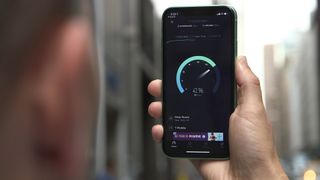
On the Speedtest.net app, the iPhone 11 delivered an average download speed of 13 Mbps over T-Mobile's network in the same location in New Jersey, compared with 15 Mbps for the iPhone 11 Pro Max. Uploads speeds were a similar story, with the iPhone 11 averaging 5.4 Mbps to the iPhone 11 Pro Max's 6.1 Mbps. That's not much of a speed difference.
One unique wireless feature on the iPhone 11 is a new U1 chip for spatial awareness that uses Ultra Wideband technology. With this chip, the iPhone can accurately pinpoint the location of other U1-enabled devices; for now, that just means other iPhone 11 handsets, and the U1 chip initially benefits just AirDrop at this point. Point in the direction of another iPhone 11, you can then share the files more efficiently than you could before.
Rumor has it that Apple has an AirTags object tracker in the works to better take advantage of the U1 chip. This would directly challenge the best key finders made by Tile and others.
iPhone 11 vs. iPhone 11 Pro vs. iPhone 11 Pro Max
If you're on the fence about which iPhone to buy, these are some notable differences between Apple's different models. The biggest? The iPhone 11 Pro and the iPhone 11 Pro cost more than the iPhone 11, even with those models available for less where they're still on sale. (Neither Pro model is featured at Apple any more.) And for that premium, you get a third rear camera for telephoto zoom, higher quality OLED displays, a fast charger in the box, slightly better water resistance and zippier LTE.
Is all of that worth the premium? It is for me, but I doubt it will be for most. Check out our iPhone 11 vs. iPhone 11 Pro vs. 11 Pro Max face-off for more more info.
iPhone 11 review: Verdict
The iPhone 12 packs even better cameras, an OLED display and 5G speeds and remains on sale at a reduced cost. The iPhone 13 specs are even more impressive. But the iPhone 11 remains a good phone for those looking to spend less.
With the iPhone 11, you still get a bright and colorful screen, good performance, excellent image quality and long battery life. The only strikes against the iPhone 11 other than the newer phones in Apple's lineup are its skimpy 64GB of storage in the base model and that the fast charger costs extra.
- iPhone 13 vs. iPhone 11: Biggest changes to expect
Mark Spoonauer is the global editor in chief of Tom's Guide and has covered technology for over 20 years. In addition to overseeing the direction of Tom's Guide, Mark specializes in covering all things mobile, having reviewed dozens of smartphones and other gadgets. He has spoken at key industry events and appears regularly on TV to discuss the latest trends, including Cheddar, Fox Business and other outlets. Mark was previously editor in chief of Laptop Mag, and his work has appeared in Wired, Popular Science and Inc. Follow him on Twitter at @mspoonauer.
